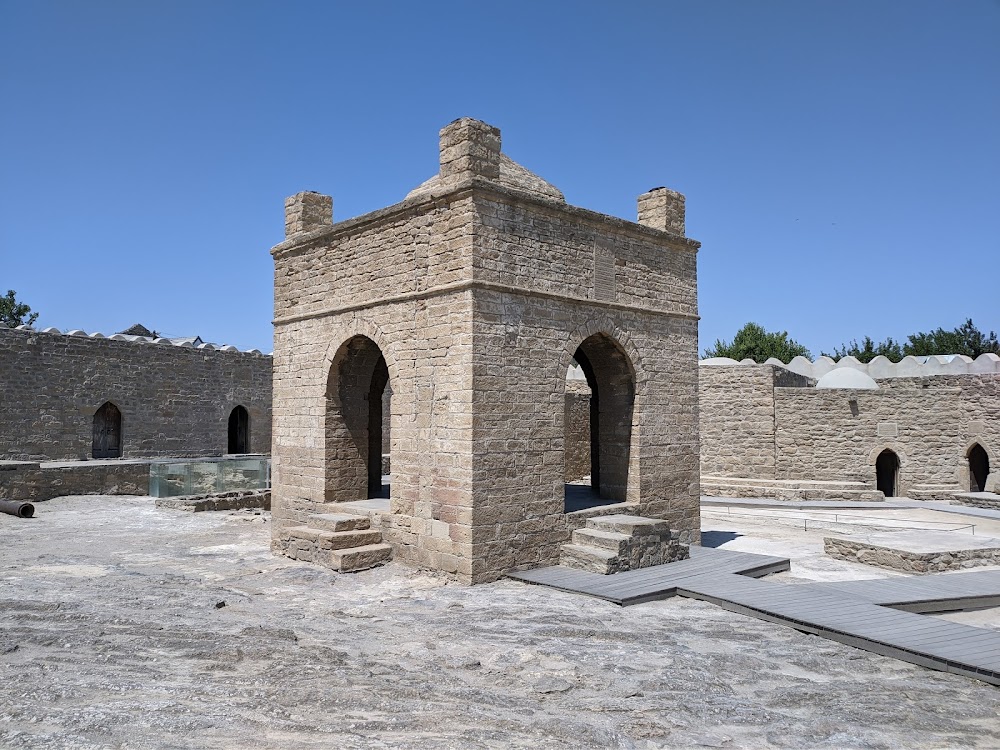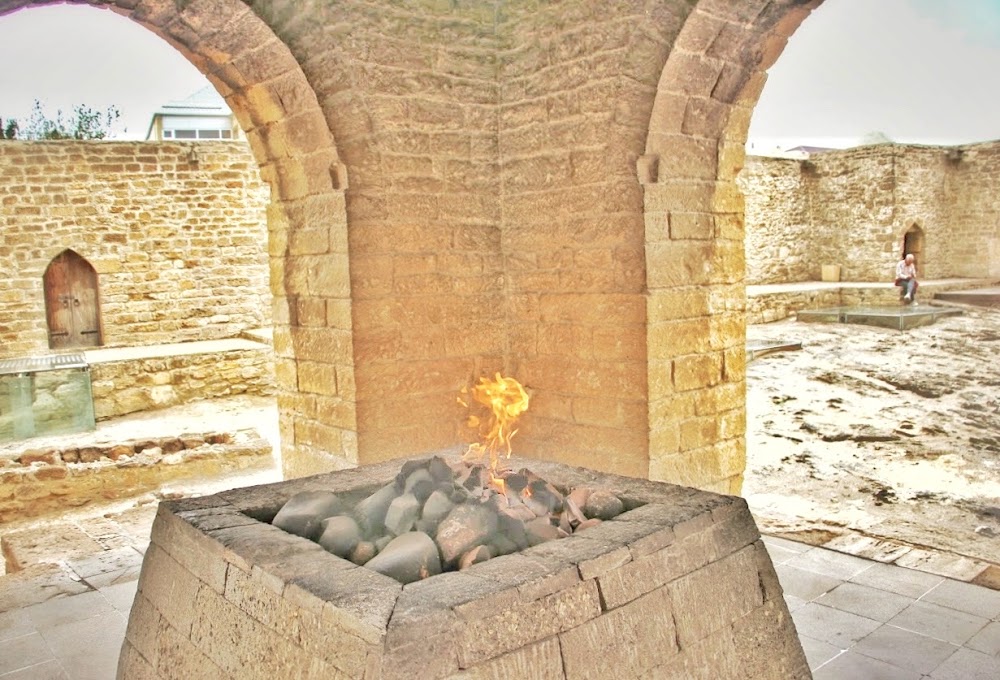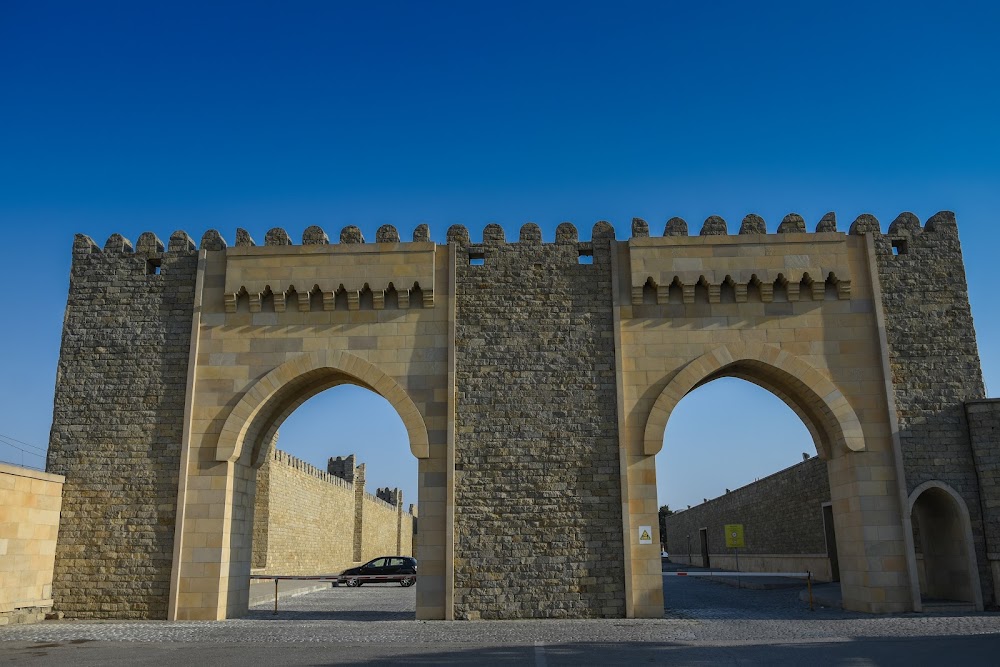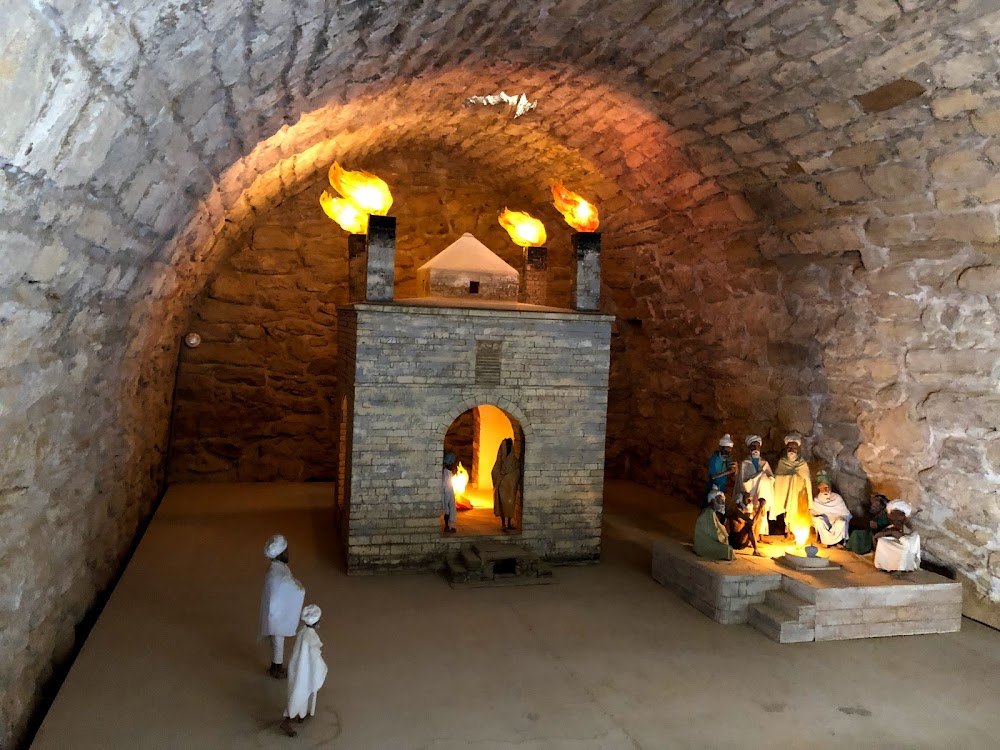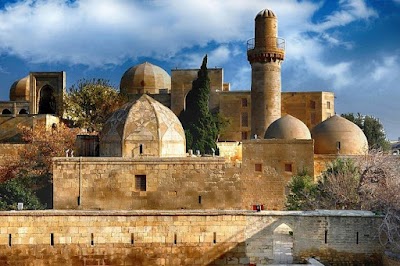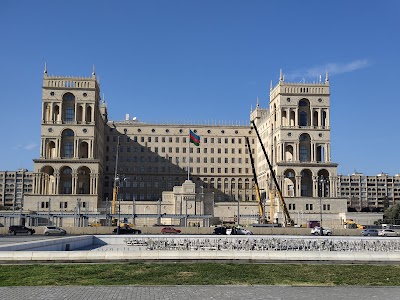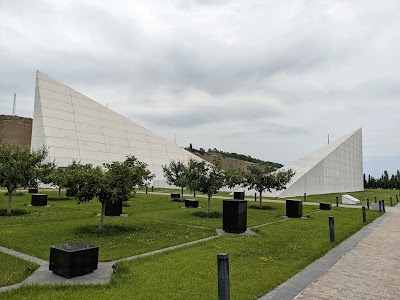Ateshgah Fire Temple (Atəşgah)
Overview
The Ateshgah Fire Temple, located in Baku, Azerbaijan, is a captivating historical monument that dates back to the 17th and 18th centuries. This unique site holds a profound connection to both Zoroastrian and Hindu communities, who came to worship the sacred fire, viewing it as a symbol of eternal life and purity. The temple serves as a testament to the rich spiritual traditions that flourished in the region.
The architectural design of the temple is striking, built in a pentagonal layout with a central altar where the sacred fire once blazed. Surrounding this altar is a hexagonal pavilion supported by a series of elegant arches. The simplicity of the design is profound, adorned with inscriptions in both Sanskrit and Persian that reveal its ancient religious significance and cultural heritage.
The origins of Ateshgah extend even further back, possibly to the 6th century, when the site emerged as a significant location for Zoroastrian worship. The natural gas and oil reserves in the area, which seeped to the surface to create eternal flames, became focal points for gatherings. However, the current structure primarily reflects the influence of Indian merchants and pilgrims who visited during the Safavid dynasty, transforming it into a prominent trade hub.
Constructed mainly from readily available stones and bricks, the temple was built by the Baku-based Indian community. These merchants, primarily Hindus and Parsis, brought along their architectural techniques and religious traditions, resulting in a unique fusion of styles. An inscription from 1745 reveals that a merchant named Kanchanagar Vakhtang invited others to contribute to the temple's construction, showcasing the collaborative spirit of its inception.
Within the temple complex, visitors can explore numerous small cells that once served as quarters for pilgrims and monks. These meticulously designed cells provided basic living necessities, while the central courtyard offered a communal space for religious and social interactions. This thoughtful layout emphasizes the importance of community and shared faith in the spiritual life of the area.
Throughout its storied history, Ateshgah has witnessed various cultural transformations. With the decline of Zoroastrianism and Hinduism in the region, the temple fell into disuse until the 19th century when it was rediscovered by European and Russian explorers, reigniting interest in its cultural significance.
During the Soviet era, the temple underwent further study and preservation, eventually becoming a museum that highlights the rich history of religious practices and cultural exchanges in Azerbaijan. Today, Ateshgah stands as a powerful symbol of religious tolerance and multiculturalism, attracting visitors worldwide who are intrigued by its deep-rooted past.
The preservation of the temple is a remarkable achievement, thanks to the collaborative efforts of historians, archaeologists, and conservationists. Modern restoration techniques have ensured the structure remains intact, while educational programs have raised awareness about its historical and cultural importance.
Visiting Ateshgah offers a profound glimpse into the spiritual lives of ancient communities who revered natural elements. The sacred fire, which once illuminated the altar, continues to symbolize the eternal connection between the past and present, faith and cultural heritage, inviting all who enter to reflect on the enduring power of belief.


